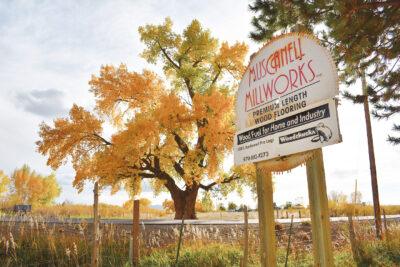Sources in the Northeast region, at the time of this writing, reported to have a mixed market, as some of the sources’ buyers ride out the market in hopes to see lumber prices drop, resulting in a slow decline in sales, while others see an otherwise stable market.
A spokesperson for a sawmill in New York State said that his sales are slower and that the market is worse than it was six months ago.
He sells to distribution yards and end users, all of which he says, “are continuing to drop their prices, waiting for lumber prices to hit bottom.” While his sales have continued to slow down over the course of the past six months, his top three best-selling species are, as listed, Red and White Oak and Hard Maple, in 5/4 through 8/4.
He said, “Transportation is not an issue as of now” and has not been a reason for the decline in their sales. When asked about the railroad strike looming at the time of this writing, he said that it should not affect them if it is a short strike, but if it becomes a prolonged ordeal then it may cause some issues.
In Vermont, a bandsaw mill salesman noted that, “The market is OK, not as good as it was six months ago. It’s not significantly worse than it was, not horrendous, but not what it was.” He said that they sell Hard and Soft Maple, Red Oak, Beech, Birch, Cherry and Ash, in a variety of thicknesses. His customers include flooring to millwork and moulding manufacturers.
He said that, while product is being sold it is hard to get it to the consumer as they have had some trouble getting containers and trucks to move the product. “We’ve been holding on to products that people want that they can’t move because they are having trouble with transportation,” he stated. When also asked about the railroad strike, he said that he did not think that would make any of his transportation issues any worse, as it is not a main source of transportation for his company.
A source from a sawmill in Pennsylvania said, “Kiln-dried lumber proves to be a challenge to sell today,” with their sales being worse than they were six months ago, and on a steep decline.
With their sales being distributed to a wide array of customers that range from distributors to manufacturers, importers to end users, so do their customers’ markets also vary. Many of the companies that they distribute to have “slowed down because of the turmoil in the marketplace, with many of them slowing down to see what happens,” he stated.
He said that their best-selling species are Hard and Soft Maple, while they also mainly deal with and sell Cherry, Red Oak, White Oak, Ash and Yellow Poplar.
Meanwhile a lumber representative from Massachusetts said that their market has been very good and is substantially better than it was six months ago.
While he said that the species and grade of lumber do not matter as much when selling industrially, they handle all types of native New England Hardwoods, with much of his lumber going out as 4/4.
“We sell to factories that need pallets, lumber, big timbers, pretty much anyone who needs and wants it, retailers, wholesalers, hobbyists,” he stated. He also noted that transportation has not been an issue for them and has not negatively impacted them.








